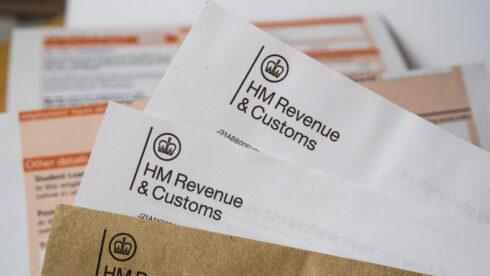HOW TO REDUCE YOUR CAPITAL GAINS TAX BILL (2018/19)
Robin Stevenson
22/10/2018
Capital Gains Tax (CGT) receipts are set to come in at over £9 billion in 2018/19, having risen steadily for a decade. Are you aware of the strategies and actions you can put in place to reduce the amount of Capital Gains Tax that you are required to pay? This article will discuss CGT and explain some simple options you might like to consider to create a less intimidating tax bill.
What is Capital Gains Tax (CGT) ?
Capital Gains Tax or CGT is charged on profits from the disposal of assets (disposing of an asset includes, selling it, giving it away as a gift, swapping it or getting compensation for it if it is destroyed). For example if you buy a painting for £1000 and later sell it for £5000 you make a gain of £4000 and are required to pay tax on your capital gain.
Assets might include:
- Shares
- Funds
- Second Homes
- Buy-to-let properties
- Business premises
- Paintings
- Antiques
Some assets are tax free and you can find more information regarding what you pay CGT on here https://www.gov.uk/capital-gains-tax/what-you-pay-it-on
How much do I have to pay?
The rate of tax that you would pay on these assets is dependent on your income and the type of asset that you are selling. However usually basic-rate taxpayers typically pay lower CGT rates of 10 per cent on gains from most assets and 18 per cent on residential property.
Trusts and higher-rate taxpayers pay 20 per cent and 28 per cent on residential property gains.
You can view further details of rates here: https://www.gov.uk/capital-gains-tax/rates
How can I reduce the amount of Capital Gains Tax you pay?
There are many legal ways to reduce your Capital Gains Tax bill over the course of the financial year and longer term. The following are options that you might like to consider. If you would like more information on our tax advisory services you can follow this link:
https://www.swindellsaccounting.co.uk/services/tax-planning/
- Use your spouse’s CGT exemption
Assets can be moved between partners without any tax charge, which can often make sense prior to the asset’s disposal particularly when one partner is a higher-rate taxpayer and the other pays little or no tax. This process is relatively simple and can realise a significant amount of capital gains over the financial year.
- Use up your allowance every year
Wherever possible it is good practice to use up your CGT limit each year. For more information on allowances you can follow this link:
https://www.gov.uk/capital-gains-tax/allowances
- Maximise use of losses
Capital losses can be carried forward to set against future gains, for example if you sell a fund or share at a loss you can help future tax-free gains by the equivalent sum.
- ISA Investments
You can move assets into an ISA and shield them from being liable for CGT. One option to keep in mind might be selling assets to produce a capital gain and then buying back the same assets immediately inside the safety of an ISA thus enabling all future gains on this asset to avoid CGT.
- Max out your pension
Contributing towards your pension provides income tax relief and with careful planning you can use a pension contribution to lift the higher-rate threshold so that the tax you pay on capital gains is reduced
- Invest in your employer’s share option scheme
Company share option plans, share incentive plans or enterprise management incentives (EMI) do not attract income tax or national insurance but are liable for CGT. EMIs for SMEs offer entrepreneurs relief on shares acquired and therefore drop the CGT rate to 10 per cent.
- Invest into an Enterprise Investment Scheme
EISs offer a 30 per cent income tax credit to investors who buy shares in small companies and hold them for three years. Gains are exempt if the EIS are held for three years
- Invest into a Seed Enterprise Investment Scheme
SEISs are focussed on start-up businesses and offer a 50 per cent tax relief. You can invest up to £100,000 each year and pay no CGT on the sale of SEIS shares held for at least three years. This is a riskier option due to the nature of start-up businesses and should only be undertaken by experienced investors.
- Reduce your taxable income
Since CGT is charged based on the rate of income tax paid, reducing your taxable income will drastically reduce your CGT bill. For more information about reducing your income tax bill do get in touch with Robin Stevenson our Tax Partner using the contact details at the end of this article.
- Gift assets into a discretionary trust
For inheritance tax planning purposes this can be a good option. You can claim gift holdover relief and any gains are passed to the trustee.
If you are interested in learning further about how to reduce your Capital Gains Tax bill do get in touch with Robin Stevenson our Tax Partner who can help you to understand your requirements and how to take advantage of your financial options

Robin Stevenson - Tax Partner
Email: robins@swindellsaccounting.co.uk
Tel: 01825 763 366
Sign up to receive our private content
straight to your inbox






